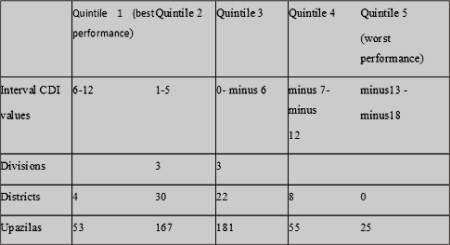Rights Analysis
Right to equal development
Oli Md. Abdullah Chowdhury
The link between poverty and human rights violation is obvious. People whose rights are denied - victims of discrimination or persecution are more likely to be poor. Generally they find it harder or impossible to participate in the labour market and have little or no access to basic services and resources. Meanwhile, the poor in many societies cannot enjoy their rights to education, health and housing simply because they cannot afford them. The case of deprivation is almost similar in Bangladesh also.
Bangladesh although has attained commendable progress in human development, regional disparities still exist. While there are distinct progresses made in health and education sector, some sub-districts are still lagging behind. Largely due to geographical isolation, benefits of the economic growth have not reached to thousands of disadvantaged living in remote areas of hills, haors and chars.

Constitution and disparity
Removing disparities has been instructed in the constitution of Bangladesh. It has been said in Article 16 of the constitution, “The State shall adopt effective measures to bring about a radical transformation in the rural areas through the promotion of a agricultural revolution, the provision of rural electrification, the development of cottage and other industries, and the improvement of education, communications and public health, in those areas, so as progressively to remove the disparity in the standards of living between the urban and the rules areas.”
Composite Deprivation Index
The term 'absolute poverty' is used for cases where children have been exposed to two or more severe deprivations. The seven dimensions assessed were shelter, sanitation, safe drinking water, information, food, education and health. The report found that people in the lowest poverty quintile are typically deprived of four of these seven basic services, and that for each rise to the next quintile in the poverty ladder, people are deprived of access to one less basic service.
The composite index allows for multi-sector social targeting of the most deprived regions. It also serves as a tool for identifying areas where multi-sector service deprivation occurs.
Mitigating inequalities
UNICEF, Bangladesh has recently published a study on regional deprivation. The report entitled, “A Case for Geographic Targeting of Basic Social Services to Mitigate Inequalities in Bangladesh” reveals relative poor performance of the isolated regions in terms of achieving development goals.
The composite deprivation index includes 4 indicators. They are high school enrolment, skill birth attendance, proportion of population using improved sanitation and adult literacy.
Equity at the divisional level
The composite deprivation index (CDI) by division is most negative in Sylhet Division (minus 4) and highest in Khulna and Barisal Division (3). Despite the very small differences, three divisions are in quintile 2 (Khulna, Barisal and Dhaka) and the other three are in quintile 3. The following table illustrates deprivation index by quintiles:
Disparities at district and sub-district level
The study has identified 8 districts as most deprived. They are Bhola, Sherpur, Netrokona ,Khagrachhari, Cox's Bazar , Sunamganj, Habiganj and Bandarban. Those districts are also prone to natural disasters.
The study reveals real disparities at upazila level, particularly between upazilas within the same district (especially urban districts or districts with isolated areas). The ranges are enormous for every indicator at the upazila level. The most deprived eight districts also contain 45 of the most deprived upazilas.
To recapitulate, there are clear advantages of geographic targeting in order to ensure basic service delivery to the most deprived areas of Bangladesh. It will not only help in achieving MDGs with equity, but accelerates the overall reduction of poverty. Removing the disparity in the standards of living is a state responsibility suggested in the constitution of Bangladesh also.
The writer is a human rights worker.